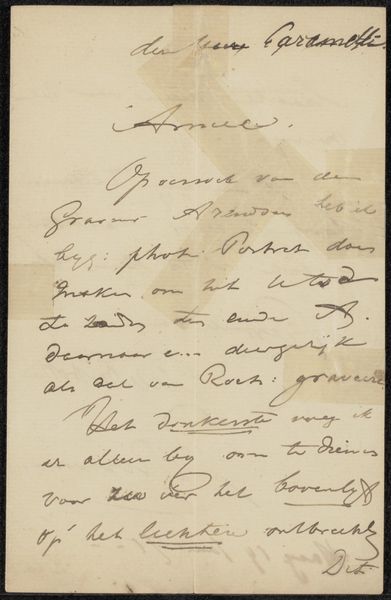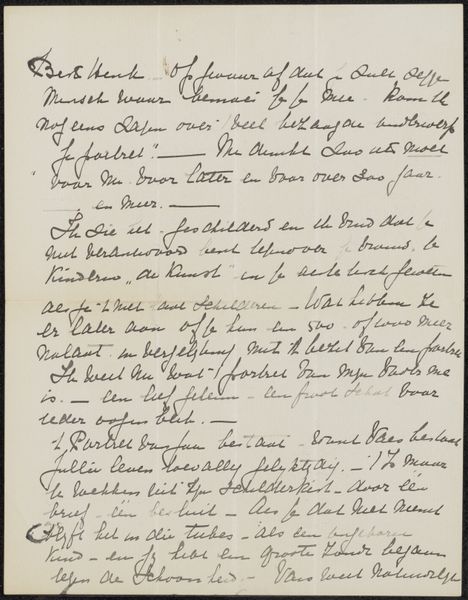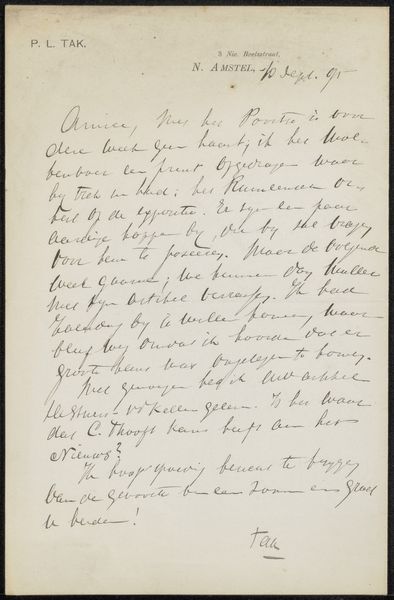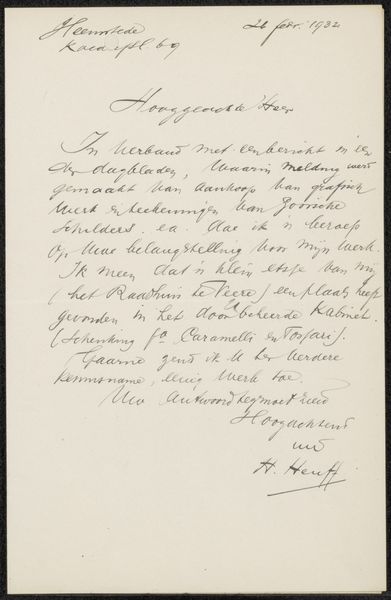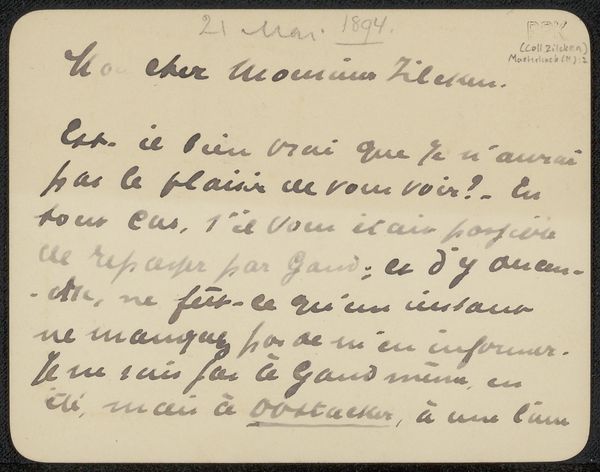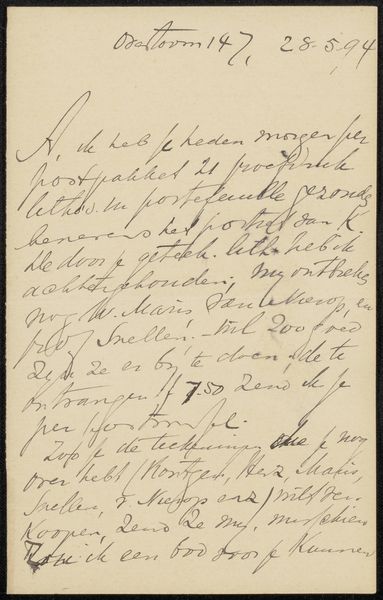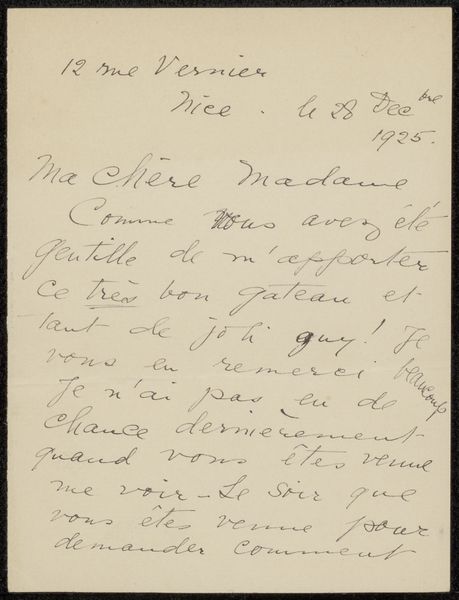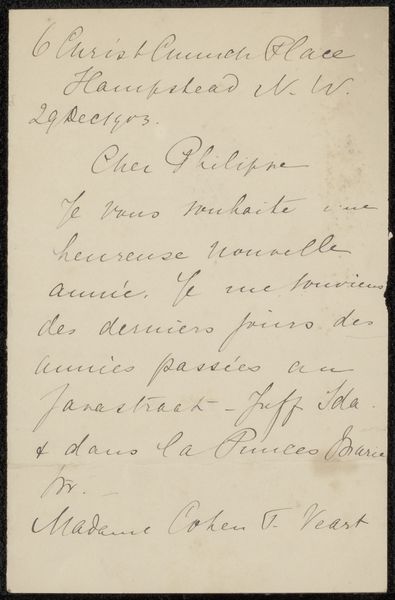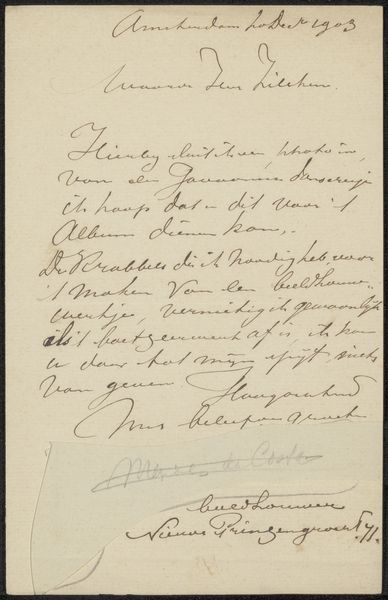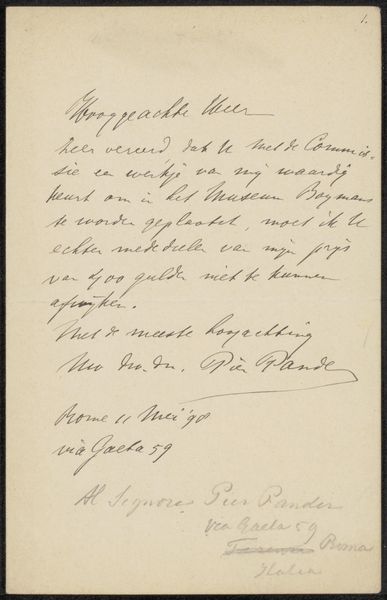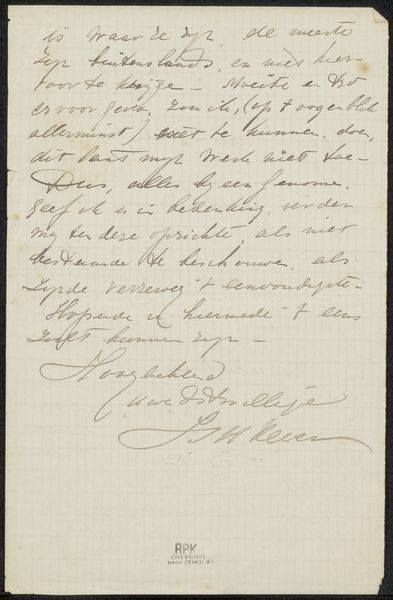
Copyright: Rijks Museum: Open Domain
Curator: Here we have "Brief aan Elsevier's Geïllustreerd Maandschrift," which translates to "Letter to Elsevier's Illustrated Monthly," created between 1871 and 1903 by Paul Rink. It’s ink on paper. Editor: My immediate sense is of intimacy, as if catching a glimpse into the private correspondence of someone from a bygone era. It's all hand-written script; so delicate and personal. Curator: Indeed, calligraphy was experiencing a resurgence at the time, connected to Romanticism's focus on the individual and the beauty of handcrafted things. It is fascinating to consider how the act of handwriting itself contributed to the overall meaning. Each flourish holds cultural memory. Editor: Let’s also think about the materiality of that ink – how it was made, its availability. The rise of illustrated magazines and the exchange represented in this letter hinged on advances in both print and postal systems. What inks were popular? Was the paper milled locally or traded? These are essential conditions of production, Curator: Very interesting, particularly considering that in the late 19th century, these printed images were highly prized as vehicles for sharing knowledge and culture, bringing new perspectives to people in new and unique ways. You start to get a sense of who the intended readership was through that alone. Editor: Precisely. Mass culture meets the handcrafted in this "Brief". And don't you find it fascinating how this physical piece of mail acted as a conduit for ideas during the turn of the century? I wonder how long it would take such a document to make its way between parties in comparison with modern speeds. Curator: An insightful perspective that highlights both the tangible and ephemeral qualities of this piece. Considering the letter is likely seeking images to be reproduced, how do you consider its contents within the artist's mind as being 'of its moment'? Editor: For me, that’s exactly the point! Paul Rink would likely have never anticipated it becoming 'art.' So to see this means of past exchange appreciated aesthetically encourages the modern eye to connect past social process, rather than some notion of a lone 'genius' at work, isolated from society. Curator: Absolutely. By considering it as a relic of interpersonal communication that reveals an important piece of context, perhaps that's what provides us, as viewers, a stronger appreciation for it. Editor: Well, in recognizing its process as a component of our appreciation, it’s rewarding to find ways it speaks to art history as an invitation for further investigation, now and into the future!
Comments
No comments
Be the first to comment and join the conversation on the ultimate creative platform.
